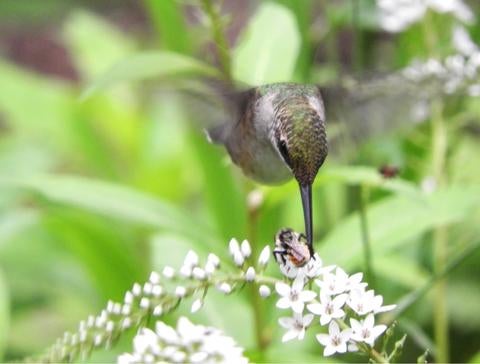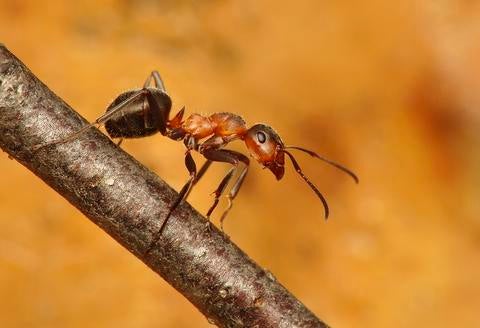In less time than it takes to read this sentence, hummingbirds can catch a whiff of potential trouble. That’s the result of new UC Riverside research showing, contrary to popular belief, the tiny birds do have an active sense of smell.
Researchers have known for some time that vultures have a highly sensitive sense of smell, with some species being compared to “airborne bloodhounds.” This is due in part to their large olfactory bulbs — tissue in the brain that controls smell.
However, hummingbirds’ olfactory bulbs are, like the rest of their bodies, extremely small. Earlier studies were unable to demonstrate that hummingbirds showed a preference for the smell of flowers containing nectar. In addition, flowers pollinated by birds generally don’t have strong odors, unlike those pollinated by insects. For these reasons, scientists did not previously believe the birds possessed the ability to smell things.
UCR scientists have now shown for the first time that not only can hummingbirds smell insects, but also that scent may help them stay out of danger while looking for nectar to eat. A paper describing their experiments has been published in the journal Behavioral Ecology and Sociobiology.
“This is pretty exciting, as it is the first clear demonstration of hummingbirds using their sense of smell alone to make foraging decisions and avoid contact with potentially dangerous insects at a flower or feeder,” said Erin Wilson Rankin, associate entomology professor and study co-author.
For their experiments, the researchers allowed more than 100 hummingbirds to choose between two feeders, either sugar water alone, or sugar water plus one of several chemicals whose scent signaled the presence of an insect. There were no visual differences between the two feeders offered in each of the experiments.
Tests included the scent deposited on flowers by European honeybees, an attraction chemical secreted by Argentine ants, and formic acid, a defensive compound produced by some Formica ants which is known to harm birds as well as mammals.
“If a bird has any exposed skin on their legs, formic acid can hurt, and if they get it in their eyes, it isn’t pleasant,” Rankin said. “It’s also extremely volatile.”
The hummingbirds avoided both of the ant-derived chemicals, especially the formic acid. However, they had no reaction at all to the honeybee scent, which is known to deter other bees from visiting flowers.
To ensure it was the chemical itself the birds were reacting to, and not simply a fear of new smells, the researchers did an additional test with ethyl butyrate, a common additive in human food.
“It smells like Juicy Fruit gum, which is not a smell known in nature,” Rankin said. “I did not enjoy it. The birds did not care about it though and didn’t go out of their way to avoid it.”
Rankin said the study raises new questions about the underrated importance that scent plays in birds’ foraging decisions and specifically, hummingbird foraging.
Ashley Kim, first author on the paper and current ecology doctoral student at UC San Diego, was based in the Rankin Lab at UCR while participating in this project.
“This research made me understand the importance of studying the basic biology and natural history of animals that are commonly overlooked,” she said.
Kim’s participation was supported by the National Science Foundation, through its Research Experiences for Undergraduates program, which helps undergraduates get hands-on experience conducting research.
Rankin typically studies trophic interactions, or as she explains it, the science of “who eats who” in nature. “Hummingbirds and insects might be competing for floral resources,” she said. “Their foraging decisions help us understand how the ecosystem functions, and any actions that ultimately might be needed for conservation.”





